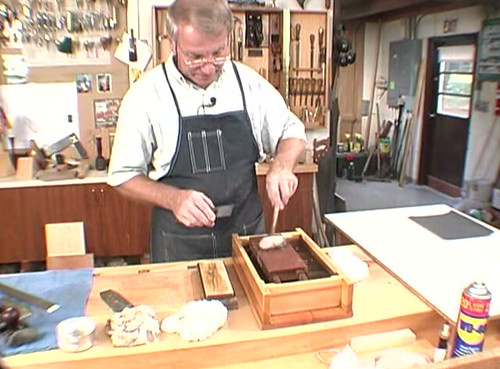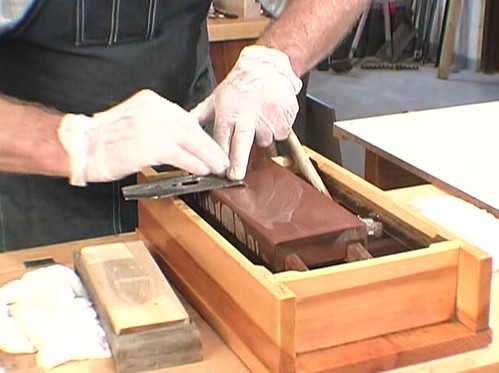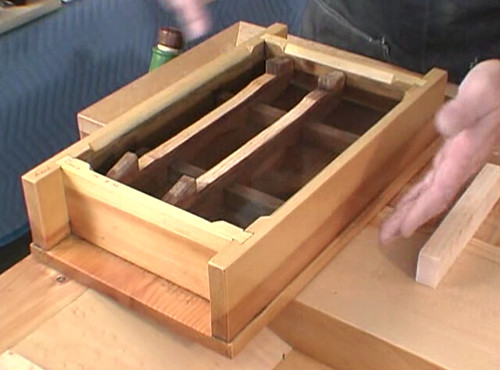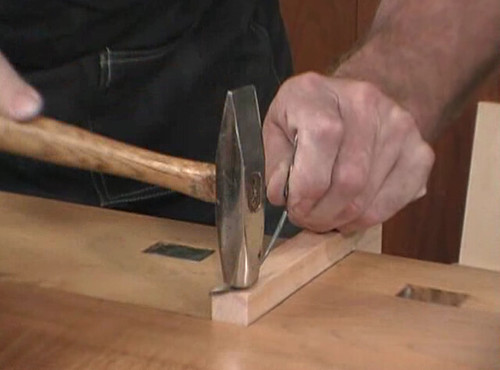No doubt wet stones are messy; probably kept the Japanese craftsman working on site, outdoors for centuries; (and don't you think you're coming in here with those messy things...)Same too for wetstone grinders, best suited to sink area. And why don't those stone pond arrangements with 3 stones or more on top, mix up the slurry as you spread the water from the trough, so you get coarse grains on your poliushing stone?
However, the higher grits 4000 and up are hard, don't wear very fast, and store dry, whilst still cutting and polishing very fast. So a diamond/waterstone combination is bench possible, as water is limited to gentle spray bottle squirt. Grinding the primary bevel is not a frequent task, and a few blades are saved up for the wet stone grinder/draining board when 'er indoors is otherwise engaged. A 15 micron/600 grit diamond plate is roughly equivalent to a 1200 grit waterstone, and cheaper than repeated purchases of lapping film. This partners an 8000 grit waterstone. For the keen* a 10,000 grit waterstone is available. Just put the stone/plate on one of those sticky plastic 150x230mm mats made to stop plates/cups slipping on trays, or on board boats etc.
There's some useful stuff in David Charlesworth's books on this. He also suggests grinding at a bit under 25 deg, and then sharpening at @32 deg (I use 600 grit diamond) till burr raised, and a final polish at 35 deg on the 8000 grit wetstone. As few as half a dozen strokes are needed - see DC's books. The 32/35 deg are easily done with a LV veritas jig and its' special roller. Quick and prolongs life of stones!
According to 3M, grit size equivalence is as follows:
FEPA is european P grit as per wet/dry, US grit as per US diamond plates and sandpaper etc, Jap as per waterstones, and microns as measured for 3M lapping film.
Micron/USgrit /Jap /FEPA
40 /280 /400 /~360 (little coarser than)
30 /400 /~500 /800 (little coarser than)
15 /600 /1200 /1200 (little coarser than)
9 /1200 /2000 /2500 (little finer than)
5 /2000 /2500/ -
3 /4000 /4000/ -
2 /6000 /6000/ -
1 /8000 /8000/ -
0.3 /10,000 /10,000/ -
*As you can see, 0.3micron lapping film is equivalent to 10,000 grit waterstone.
The film is very good, and well worth it, on a cheap granite surface plate for flattening blades and chisels if your diamond plate is not very flat. The Ezelap ones from Tilgear are cheaper and seem to last just as long as the more expensive DMT perforated ones (as tried here)






































